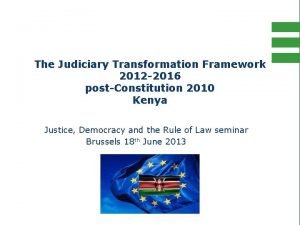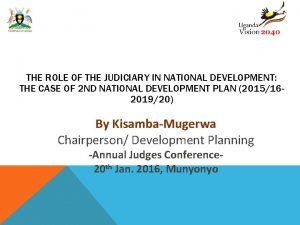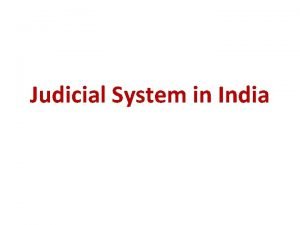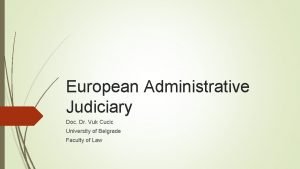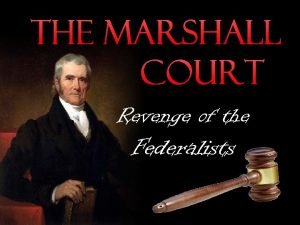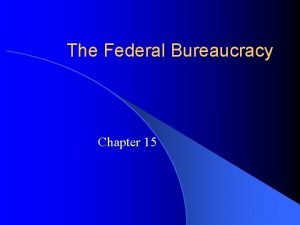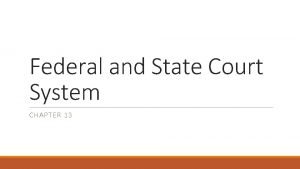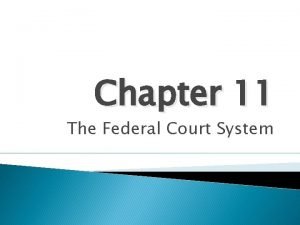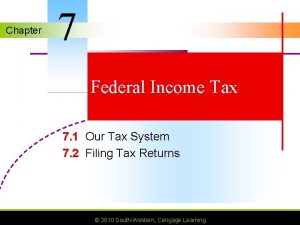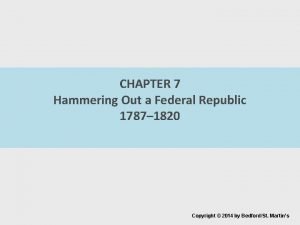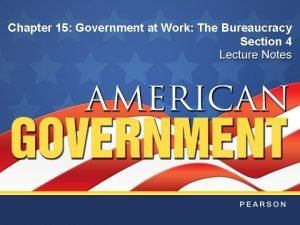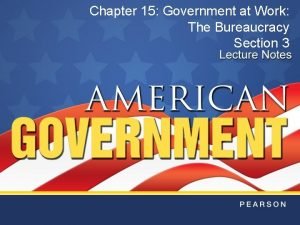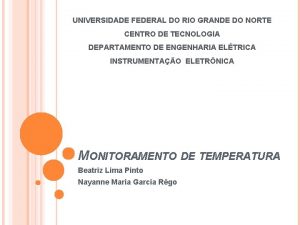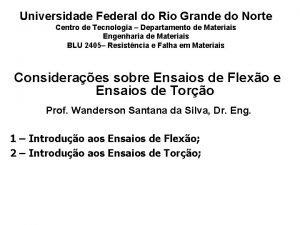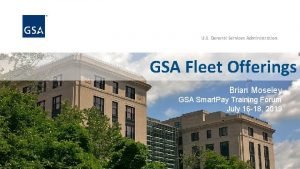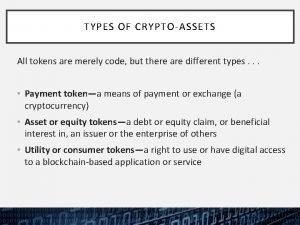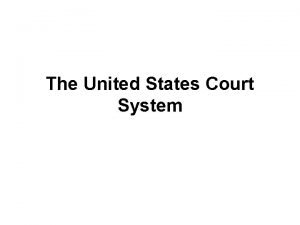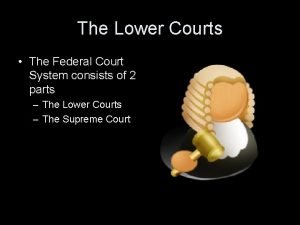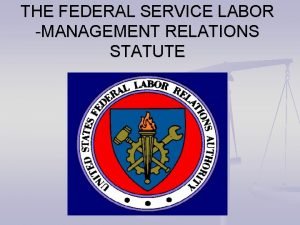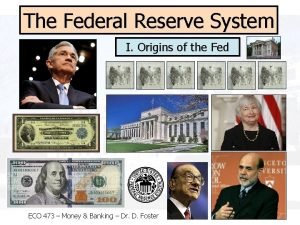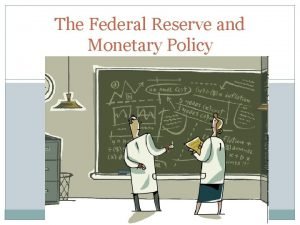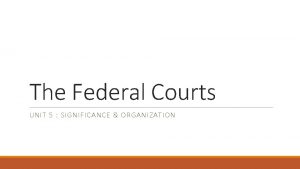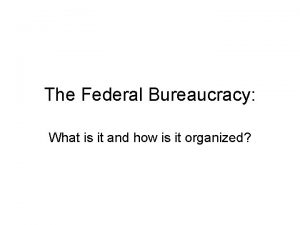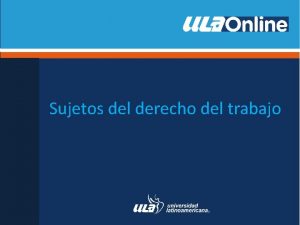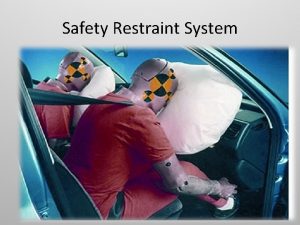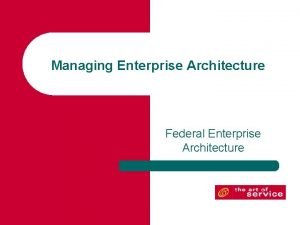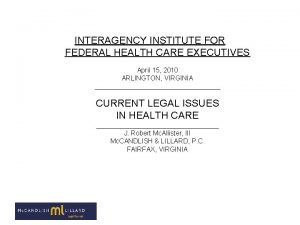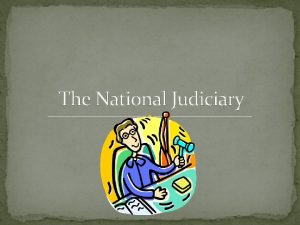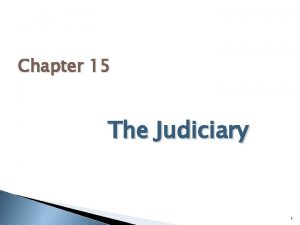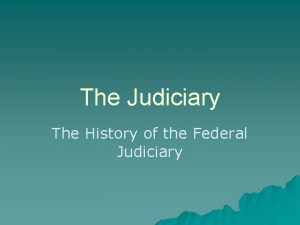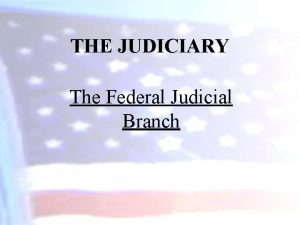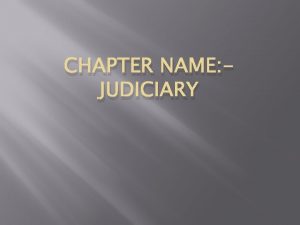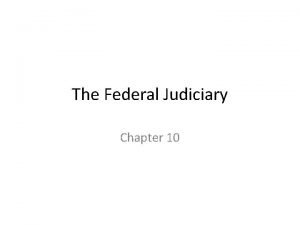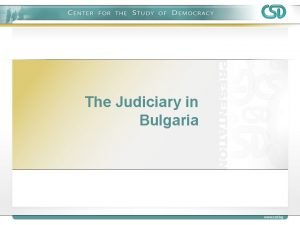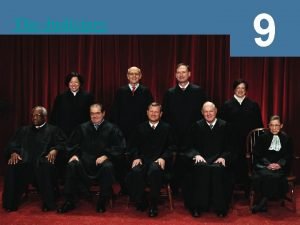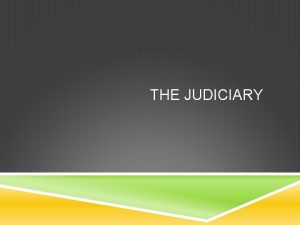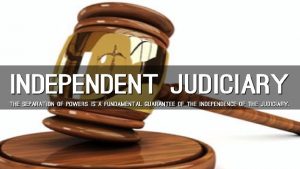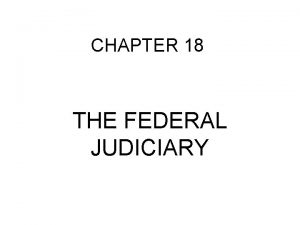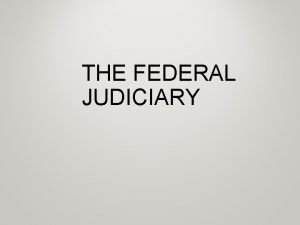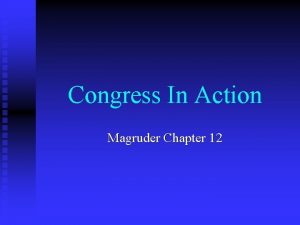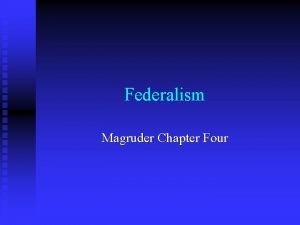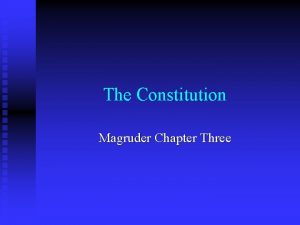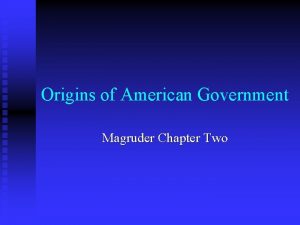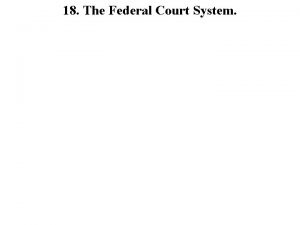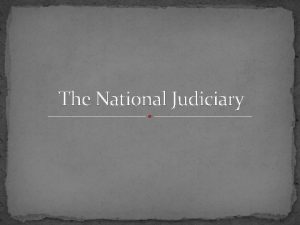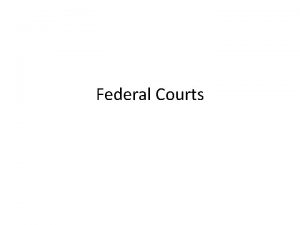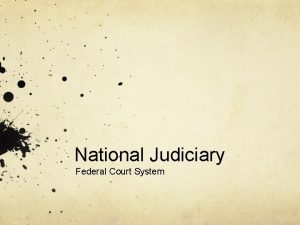The Federal Judiciary Magruder Chapter 18 The National












































































- Slides: 76

The Federal Judiciary Magruder Chapter 18

The National Judiciary

The Creation of a National Judiciary n n The federal court system was established by Article III of the Constitution u Article III Section 1 There are two separate court systems in the United States u The United States has a national system of courts u Each State has its own court system that hears most of the cases brought in this country

The Creation of a National Judiciary n Over the years Congress has created two types of federal courts u Constitutional Courts include the Supreme Court, the courts of appeal, the district courts, and the Court of International Trade t Created under Article III, Section 1 t Judges serve for life

The Creation of a National Judiciary u Special, or legislative, courts are created by Congress and hear only a limited range of specialized cases. t Created under Article I Section 8 t Judges serve for a limited time

Jurisdiction in the Federal Courts n Federal courts can hear cases that arise out of the: u US Constitution u Federal Statute or Treaty u Cases affecting Ambassadors, other public Ministers, and Counsels u Cases of admiralty and maritime jurisdiction

Jurisdiction in the Federal Courts Cases to which the United States is a party u Controversies between two or more States u Controversies between citizens of different States u

Jurisdiction in the Federal Courts Controversies between citizens of the same State claiming lands under grants of different States u Controversies between a State, or the citizens thereof, and foreign States, Citizens, or subjects t Article III Section 2 u

Jurisdiction in the Federal Courts All cases that do not fall under the jurisdiction of the federal courts are within the jurisdiction of the State courts n Some cases have exclusive (federal courts only) jurisdiction n Some cases have concurrent (federal or state courts) jurisdiction n

Jurisdiction in the Federal Courts The district court in which a case is first heard is said to have original jurisdiction n The appellate court to which a case is appealed from a lower court is said to have appellate jurisdiction n

Appointment of Judges Federal judges are nominated by the President and confirmed by the Senate n Presidents almost always nominate persons from their own party who share their philosophy of government n

Terms and Pay of Judges n Most federal judges are appointed for life and may be removed only through the impeachment process u Constitutional Courts only u Special Courts – 12 or 15 year terms t Table on page 478

Terms and Pay of Judges n Congress sets judicial salaries and benefits u Chief Justice – $208, 100 u Associate Justices -- $199, 200 u Court of Appeals -- $171, 800 u District Court -- $162, 100 t Can never be decreased

Terms and Pay of Judges n Judges can retire with full salary at the age of 70 after serving for at least 10 years or 65 if they have served for 15 years

Court Officers Each district court has many officials who assist the district judge n Clerks – take care of the records of the court’s proceedings, maintain the court seal n Bailiffs – keep order in the courtroom n Stenographers – keep an accurate record of what is said in the courtroom n

Court Officers Magistrates – issue warrants of arrest, set bail, and can try certain minor offenses n Bankruptcy judges – at least one per district court u 326 in the US, serve 14 year terms n United States attorneys – try cases before the district courts n Federal marshals – national police n

The Inferior Courts

The District Courts Formed in 1789 by Congress with the passing of the Judiciary Act of 1789 n At present there are 94 district courts in the United States n 50 States are divided into 89 district courts with one in D. C. , one in Puerto Rico, one in Virgin Islands, one in Guam, one in Northern Marianas n

The 632 district court judges hear 80 percent of the federal caseload n Each State forms at least one judicial district, and a minimum of two judges are assigned to each district n

The District Courts n District courts have original jurisdiction over most of the cases heard in the federal courts u District courts hear both civil and criminal cases u District courts use both grand petit juries

The Courts of Appeal Courts of appeals were created in 1891 as “gatekeepers” to the Supreme Court n There are now 12 courts of appeals and 179 judges n Appellate courts are regional and usually hear appeals from courts within their circuits n

The Courts of Appeal They also hear appeals from the United States Tax Court, the territorial courts, and from decisions of federal regulatory commissions n Each Supreme Court Justice is assigned to one of the 12 circuits n

Two Other Constitutional Courts n The Court of International Trade has nine judges who hear civil cases arising out of the tariff and other trade-related laws. u Sit in three judge panels u Hold trials in major ports: New York, New Orleans, San Francisco, Boston u Appeals go to Court of Appeals for the Federal Circuit

Two Other Constitutional Courts n The Court of Appeals for the Federal Circuit has 12 judges. It was set up in 1982 to centralize the appeals process in certain types of federal cases and in cases from certain lower and special courts u Has a nationwide jurisdiction u Hears only civil cases

The Supreme Court

West Side of the Court

Supreme Court Front Facade

Back of Supreme Court

Contemplation of Justice

Authority of Law

1810 -1860

The Old Senate Chamber

Supreme Court Chambers

Conference Room

Supreme Court Library

The Supreme Court Only court specifically mandated by the Constitution n Has a chief justice and eight associate justices n This is the highest court in the United States and has the final authority on all questions of federal law n

Judicial Review Judicial review is the power to decide on the constitutionality of an act of government n The Founders intended to give this power to the courts, but did not write it in the Constitution n Alexander Hamilton discussed this idea in Federalist 78 (quote p. 472) n The principle was established in the case of Marbury v. Madison (1803) n

Judicial Review Court often exercises this power n Constitution is the Supreme law of the land u Article VI n All legislative enactments are subordinate to the Constitution n Judges are sworn to enforce the provisions of the Constitution n

Jurisdiction The Supreme Court has great power as the ultimate authority on constitutionality and as the arbiter of disputes between States and the Federal Government n The Supreme Court has both original and appellate jurisdiction n

Jurisdiction n Original Jurisdiction is based on Article III Section 2 u Cases to which a State is a party u Cases involving Ambassadors, other public Ministers, and Consuls

Jurisdiction Congress has provided that the Court shall have Exclusive and Original jurisdiction over: u Ambassadors or other public Ministers u Cases between States n Congress can control the appellate jurisdiction of the Supreme Court n

Jurisdiction Can remove any appellate jurisdiction that it wishes n But most of its cases are appeals n Since 1925, the Supreme Court has had almost complete control over its own caseload n

How Cases Reach the Court Over 6, 000 cases are appealed to the Supreme Court each year n The Court will select only a few hundred to be heard n Under the “Rule of Four, ” at least four justices must agree that the Court should hear a case before the case is selected for the Court’s docket n

How Cases Reach the Court The Court will dispose of half of the cases with a simple, brief, written statement n The Court decides, with full opinions, only about 100 cases per year n Most cases reach the Court by writ of certiorari – an order to a lower court to send the record in a given case to the Supreme Court for its review n

How Cases Reach the Court “Cert” is granted in only a limited number of cases u Constitutional question n When “Cert” is denied, the lower court ruling stands n A few cases reach the Court by “certificate” n Not clear about a rule of law n

How Cases Reach the Court n Most cases reach the supreme Court through the State Supreme Courts and the Federal Courts of Appeal

The Supreme Court Chief Justice u John Roberts (Bush, 2005) n Associate Justices u John Paul Stevens (Ford, 1975) u Antonin Scalia (Reagan, 1986) u Anthony Kennedy (Reagan, 1988) u David Souter (Bush, 1990) n

The Supreme Court Clarence Thomas (Bush, 1991) u Ruth Bader Ginsburg (Clinton, 1993) u Steven Breyer (Clinton 1994) u Samuel Alito, Jr. (Bush, 2006) u

Chief Justice John Roberts

John Paul Stevens

Antonin Scalia

Anthony Kennedy

David Souter

Clarence Thomas

Ruth Bader Ginsburg

Steven Breyer

Samuel Alito, Jr.

The Supreme Court at Work The court term begins at 10: 00 am on the first Monday in October n The term will usually end in June or July n Justices hear cases in two-week cycles n Usually will hear oral arguments on Monday, Tuesday, Wednesday, and sometimes Thursday n

The Supreme Court at Work Each lawyer must be on the approved list to argue cases before the Supreme Court n Each side receives thirty minutes to argue their case n Justices can interrupt a lawyer at any time to ask questions about the case n When the red light goes on, the period is over n

The Supreme Court at Work Briefs are the main way that information is provided to the Justices. n Briefs, written documents supporting one side of a case, are submitted before oral arguments are heard n May run into the hundreds of pages n Amicus curiae (friend of the court briefs) n Can only be filed with court’s permission n

The Supreme Court at Work The Solicitor General represents the United States whenever the US is a party to a case n He or she decides which cases to appeal to the Supreme Court n The present Solicitor General is Paul Clement n

The Supreme Court at Work n The Conference: u Done behind closed doors u No written records are kept of the proceedings u Chief Justice speaks first about the case and lays out his reasoning about the rule of law and how the case should be decided

The Supreme Court at Work The next senior justice then speaks and gives his point of view u Then each justice in order of seniority u Once all justices have had their say, the last justice appointed to the court will vote. u Then each justice will vote in order of seniority u

The Supreme Court at Work The Chief Justice will vote last giving him the opportunity to break a tie, if necessary u Quorum for the Court is six u Majority is necessary for a decision to be rendered t 4 of 6; 4 of 7; 5 of 8; 5 of 9 u

The Supreme Court at Work If the vote ends in a tie, the decision of the court that heard the case last, stands n If the Chief Justice is in the majority, he will write the opinion of the court or will assign this to one of the majority voters n If Chief Justice is in the minority, the senior Justice in the majority will serve in this role n

The Supreme Court at Work n Opinions that can be issued: u Opinion of the Court (Majority Opinion) t Outlines the court’s position and the reasoning for that position u Concurring Opinion t Justice agrees with the majority but for different reasons

The Supreme Court at Work Dissenting Opinion t Justice believes that the Court erred in its ruling and here are the reasons why n Stare decisis – let the decision stand u Creates the rule of precedent n Dissenting Opinion could be used to overturn some future case u

The Special Courts

The United States Claims Court The United States may be sued only if it gives its consent u Sovereign Immunity n The Claims Court hears cases from all over the country in which there are claims for damages against the Federal Government n Originally had to have a appropriation from Congress n

The United States Claims Court 1855 – Congress created the Claims Court n 16 judges serve 15 year terms n Paid when Congress appropriates the money n Can appeal to the Court of Appeals for the Federal Circuit n

The Territorial Courts Under the Constitution, Congress created courts for the nation’s territories n These courts operate much like local courts in the State systems n

The Courts of the District of Columbia The District of Columbia has its own system of courts n This system was set up by Congress n A Superior Court and Court of Appeals for the City n A District Court and a Court of Appeals as a part of the national system n

The Court of Appeals for the Armed Forces The five judges of this court are civilians appointed to 15 year terms n This court hears appeals from court-martial convictions and is usually the court of last resort for members of the Armed forces u Military is under the UCMJ – Uniform Code of Military Justice u Created in 1950 n

The Court of Veterans Appeals The seven judges of the Court of Veterans Appeals are appointed by the President for 15 year terms n They hear appeals from veterans who claim that the Veterans Administration has mishandled their cases u Created in 1988 u Appeal to the C of A for the FC n

The United States Tax Court The 19 judges of the Tax Court are appointed by the President to 12 year terms n The Tax Court hears only civil cases involving disputes over the application of tax laws u Created in 1969 u Cases from the IRS or Treasury Dept. n

 Magruder's principle
Magruder's principle Judicial transformation framework
Judicial transformation framework Judicial activism v. judicial restraint
Judicial activism v. judicial restraint Cohesive society and preserved identity
Cohesive society and preserved identity Department of judiciary
Department of judiciary 3 types of courts in india
3 types of courts in india Vuk cucic
Vuk cucic Whats the judiciary act
Whats the judiciary act What are the three levels of government
What are the three levels of government Chapter 15 the federal bureaucracy
Chapter 15 the federal bureaucracy Chapter 13 federal and state court systems
Chapter 13 federal and state court systems What court helps congress exercise its power
What court helps congress exercise its power Chapter 7 federal income tax
Chapter 7 federal income tax Hammering out a federal republic
Hammering out a federal republic Which trend characterized thomas jefferson's presidency?
Which trend characterized thomas jefferson's presidency? Chapter 15 section 1 the federal bureaucracy answer key
Chapter 15 section 1 the federal bureaucracy answer key Chapter 15 section 1 the federal bureaucracy
Chapter 15 section 1 the federal bureaucracy National unification and the national state
National unification and the national state Hát kết hợp bộ gõ cơ thể
Hát kết hợp bộ gõ cơ thể Bổ thể
Bổ thể Tỉ lệ cơ thể trẻ em
Tỉ lệ cơ thể trẻ em Chó sói
Chó sói Chụp tư thế worms-breton
Chụp tư thế worms-breton Hát lên người ơi
Hát lên người ơi Các môn thể thao bắt đầu bằng tiếng bóng
Các môn thể thao bắt đầu bằng tiếng bóng Thế nào là hệ số cao nhất
Thế nào là hệ số cao nhất Các châu lục và đại dương trên thế giới
Các châu lục và đại dương trên thế giới Cong thức tính động năng
Cong thức tính động năng Trời xanh đây là của chúng ta thể thơ
Trời xanh đây là của chúng ta thể thơ Cách giải mật thư tọa độ
Cách giải mật thư tọa độ Làm thế nào để 102-1=99
Làm thế nào để 102-1=99 độ dài liên kết
độ dài liên kết Các châu lục và đại dương trên thế giới
Các châu lục và đại dương trên thế giới Thể thơ truyền thống
Thể thơ truyền thống Quá trình desamine hóa có thể tạo ra
Quá trình desamine hóa có thể tạo ra Một số thể thơ truyền thống
Một số thể thơ truyền thống Cái miệng bé xinh thế chỉ nói điều hay thôi
Cái miệng bé xinh thế chỉ nói điều hay thôi Vẽ hình chiếu vuông góc của vật thể sau
Vẽ hình chiếu vuông góc của vật thể sau Thế nào là sự mỏi cơ
Thế nào là sự mỏi cơ đặc điểm cơ thể của người tối cổ
đặc điểm cơ thể của người tối cổ Giọng cùng tên là
Giọng cùng tên là Vẽ hình chiếu đứng bằng cạnh của vật thể
Vẽ hình chiếu đứng bằng cạnh của vật thể Vẽ hình chiếu vuông góc của vật thể sau
Vẽ hình chiếu vuông góc của vật thể sau Thẻ vin
Thẻ vin đại từ thay thế
đại từ thay thế điện thế nghỉ
điện thế nghỉ Tư thế ngồi viết
Tư thế ngồi viết Diễn thế sinh thái là
Diễn thế sinh thái là Dạng đột biến một nhiễm là
Dạng đột biến một nhiễm là Bảng số nguyên tố
Bảng số nguyên tố Tư thế ngồi viết
Tư thế ngồi viết Lời thề hippocrates
Lời thề hippocrates Thiếu nhi thế giới liên hoan
Thiếu nhi thế giới liên hoan ưu thế lai là gì
ưu thế lai là gì Khi nào hổ mẹ dạy hổ con săn mồi
Khi nào hổ mẹ dạy hổ con săn mồi Khi nào hổ con có thể sống độc lập
Khi nào hổ con có thể sống độc lập Hệ hô hấp
Hệ hô hấp Từ ngữ thể hiện lòng nhân hậu
Từ ngữ thể hiện lòng nhân hậu Thế nào là mạng điện lắp đặt kiểu nổi
Thế nào là mạng điện lắp đặt kiểu nổi Universidade federal do rio grande do norte
Universidade federal do rio grande do norte Universidade federal do rio grande do norte
Universidade federal do rio grande do norte Gsa drive-thru login
Gsa drive-thru login Federal reserve jurisdiction
Federal reserve jurisdiction Us circuit court map
Us circuit court map Federal court system structure
Federal court system structure Federal service labor-management relations statute
Federal service labor-management relations statute Federal reserve system
Federal reserve system Structure of the federal reserve
Structure of the federal reserve Us federal
Us federal Federal bureaucracy definition
Federal bureaucracy definition Sujetos colectivos ley federal del trabajo
Sujetos colectivos ley federal del trabajo Federal question jurisdiction
Federal question jurisdiction Rear right safety restraint system fault
Rear right safety restraint system fault Tertiary line of the ikebana representing earth
Tertiary line of the ikebana representing earth Federal enterprise architecture data reference model
Federal enterprise architecture data reference model Interagency institute for federal health care executives
Interagency institute for federal health care executives

